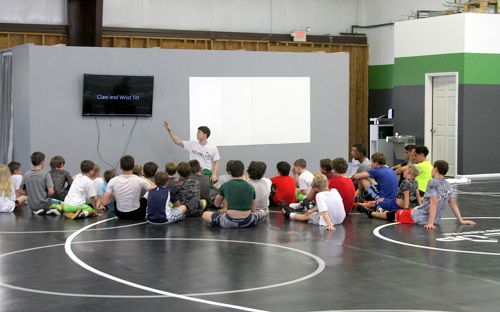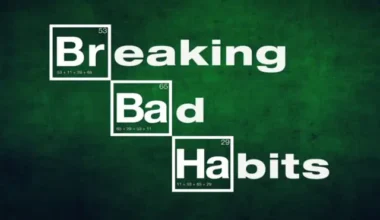Ever show a move, send your wrestlers off to drill it, and it’s almost like they weren’t even there? Maybe it’s not their fault. Your ability to clearly explain a move can make or break their understanding of it.
Save yourself (and them) frustration by improving your verbal coaching skills. Here are some tricks I’ve picked up along the way that can help when demonstrating to everyone, as well as fixing issues when you work the room:
Keep it short
Spend no more than 3-4 minutes explaining a move. If the technique requires more detail, either break it into pieces to master small parts first (chunking) or hold back on fixing common mistakes until they’ve had a chance to try it. You don’t need to explain all the variations and counters that could happen. Get them trying it first so they will have context when you add more detail.
Prevent common mistakes by revealing them up front
I like to say something like “you’re gonna to want to get on your knees and push them over with the chicken wing. This is a normal mistake, but the arm ends up slipping out. Instead, stay on your toes and sit your bottom leg through to jam their shoulder into their ear first”. By heading it off at the pass, it helps prevent the mistake from happening in the first place. Or even if it happens, they know it was wrong and can fix it easier. It’s also very important that they know these mistakes are normal so they don’t think “I just don’t get wrestling” and learn how to be patient with themselves.
Emphasize only 2-3 important principles
At the end of demonstrating, do a quick summation of the top 2-3 things you want them to concentrate on when drilling. Example: “When you hit this single focus on turning your toe when you step, bring your elbow to your hip when you level change and place your forehead in their ribs.” There might be other important points but you can emphasize a new set of 2-3 after you correct mistakes.
Keep it clear and specific
Avoid general and vague phrases like “drive him over”. Each kid may have a different interpretation of what that means. You may not be a detail oriented coach and that’s okay. But when communicating, try to be clear so they understand the instructions you are giving them. Instead of “drive him over” for a half nelson, say “pop your right elbow up, pull the head toward you and drop your right elbow to the mat behind his head so you can grab his chin and your shoulder is in front of theirs. Now squeeze his head into your arm pit and look up as you push on your toes.” That might seem like more steps but they will pick it up quicker in the long run.
Avoid “adult” words
This mostly applies to young kids but it’s still best to dumb it down for high schoolers (Have you talked to a 15 year old lately?). Words such as “elevate”, “extend” and “adjust” can go over a young wrestler’s head and you will assume they get it. For these examples, instead consider “Lift”, “Stretch out” and “Move”. If you aren’t sure, simply ask them “Do you know what I mean by ___?”.
Use analogies
Rather than simply explaining the technique, paint a picture in their head they can relate to and remember easier. For example, to make sure the aren’t twisting in their stance I tell them to pretend laser beams are shooting out of their head, shoulders, knees and toes and that all the laser beams need to shoot the same target. Or when pinning with a half, instead of saying “head up” I tell them to look up and smile at your parents taking a picture of you pinning someone.
Reference successful wrestlers
Tell them about other top wrestlers who use this move. This both establishes credibility but also gives them people they can look up to. These might be senior level or NCAA wrestlers or even older kids they know. Kids want to emulate people they look up to. And if you can, show videos of that person hitting the move so they are motivated to make it look like what they see.
Have them talk you through it
To test if they were paying attention, it helps to force them to recall it by making them walk you through next steps. Show the first part of it and say “Okay what do I do next?” or do it wrong and say “Is this right? Why shouldn’t I do it this way?” This is expecially effective on a second or third day of working a move.
Exude Confidence
If you act like this is the best move in the world and tell them it will work, they will believe you.
Keep it engaging
Boring = not paying attention. You may not be a high energy personality and that’s fine. But do your best to keep kids engaged. Avoid being monotone and talking too long. You can also keep them paying attention by using their names, asking them questions and keeping it conversational.





